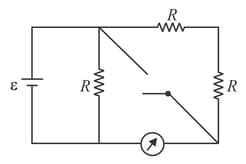A potentiometer wire as shown is long of resistance ; the free end of an ideal voltmeter is touching the potentiometer wire. What should be the velocity of the jockey as a function of time so that reading in voltmeter varies with time as ?



Important Questions on Electrical Measuring Instruments
For the potentiometer arrangement shown in the figure, the length of wire is and its resistance is . Find the length for which the galvanometer will show zero deflection.
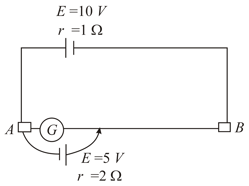
An ammeter of finite resistance and a resistor are joined in series to an ideal cell . A potentiometer is joined in parallel to . The ammeter reading is and the potentiometer reading is . is now replaced by a voltmeter of finite resistance. The ammeter reading now is and the voltmeter reading is . Then
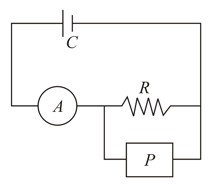
In the given potentiometer circuit, the length of the wire is and resistance is . The length for no deflection in galvanometer is
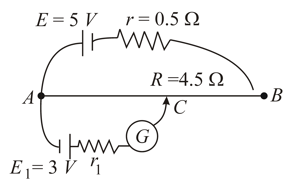
A battery of emf is connected across a long uniform wire having resistance . The cells of small emf and having internal resistances and , respectively, are connected as shown in the figure. If galvanometer shows no deflection at point , the distance of a point from a point is equal to
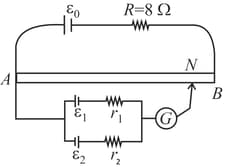
is the ideal voltmeter in the figure. Resistance of the resistor shown is . Initially the switch is in position when charging of the capacitor starts. Initially, the capacitor was uncharged. The switch in the circuit shifts automatically from to when and goes back to from when . The ideal voltmeter reads the voltage across the capacitor as plotted. What is the period of the waveform in terms of and ?
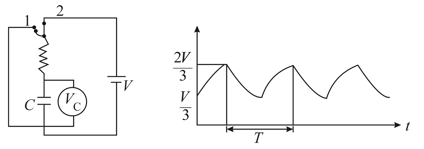
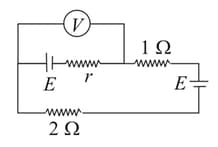
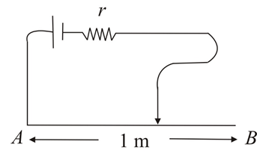
In the circuit shown, the reading of the ammeter is doubled after the switch is closed. Each resistor has the resistance and the ideal cell has an emf of . Then, the ammeter
